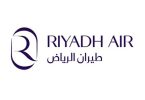(eTN) – Travel professionals and invited media from all over the world have converged in Harare, Zimbabwe, to participate in the Sanganai Hlanganani World Travel and Tourism Africa Fair 2010, which ended on Sunday, October 17.
Walter Mzembi, Zimbabwe’s Minister of Tourism and Hospitality Industry, who spoke to some of the media yesterday, said that the “peaceful and apolitical” tourism sector was the “bridge that links Zimbabwe to the international community” and that his ministry’s priority was to re-engage the country with the rest of the world.
In 1996, a total of 45 international airlines were servicing this destination, from 100 different international source markets. Mzembi said: “Today we are down to eight, so we must work towards a recovery position where we get back the 45 airlines and work with other airlines in order to promote accessibility of the destination.”
“I’m preoccupied at this juncture with recovery. Once we get back to our peak levels, we can start talking about a growth in the industry.”
He said that peak levels were at 2.5 million tourist arrivals in 1996. “I want 2.5 million ‘cream’ arrivals – people who come into the destination and spend money,” he continued.
Having secured a seat on the United Nations World Tourism Organization (UNWTO) Executive Council on October 3 this year, Zimbabwe was in a stronger position to take the lead when it came to regional tourism, according to Mzembi. He believed that Zimbabwe should not work in isolation but integrate regionally, for today’s tourist was seeking regional packaging and value for money.
When questioned about the skills drain from the country because of the years of economic instability, Mzembi believed that the region had gained as the majority of these people had remained within the region. “It is our loss, but we hope we will attract them back on the back of our economic recovery. There is already quite an influx of Europeans who are back in the country establishing businesses, mostly restaurants,” he said.
The relationship with neighboring South Africa was also strengthening, with Zimbabwe Tourism Authority (ZTA) offices now secured in Durban, Cape Town, and Johannesburg allowing continual closer cooperation between the two countries. This includes plans for improvements at the often congested Beitbridge border, for which a new master plan had been approved and funds allocated he said. “Once we can assure the visitor from South Africa can be cleared in less than a minute we will have our (tourism) traffic back.”
Earlier in the week, Givemore Chidzidzi, chief operating officer ZTA, said that the tourism industry was “the accelerator for the recovery of Zimbabwe” and that in many policy pronouncements, tourism was cited as the “low hanging fruit, which we need to harvest very quickly if our economy is to recover speedily.”
“We recognize our tourism industry as a sector that provides a lot of employment opportunities; it is contributing immensely to our GDP, and the spread of our wealth in Zimbabwe hinges on tourism, because it is happening in every part of the country,” he said.
Travel show organizers for ZTA indicated they had about 270 buyers, mainly drawn from the United Kingdom, Baltic Islands, Russia, Germany, Italy, and the Middle East. The small show is held at the capital’s Exhibition Park and will be the official opening ceremony at Glamis Stadium in the exhibition grounds. Jamaican dancehall superstar Beenie Man has been brought in to provide the entertainment.
The ZTA has also hosted a series of tours throughout the country for the buyers and media in an effort to stimulate tourist interest in the country.






















